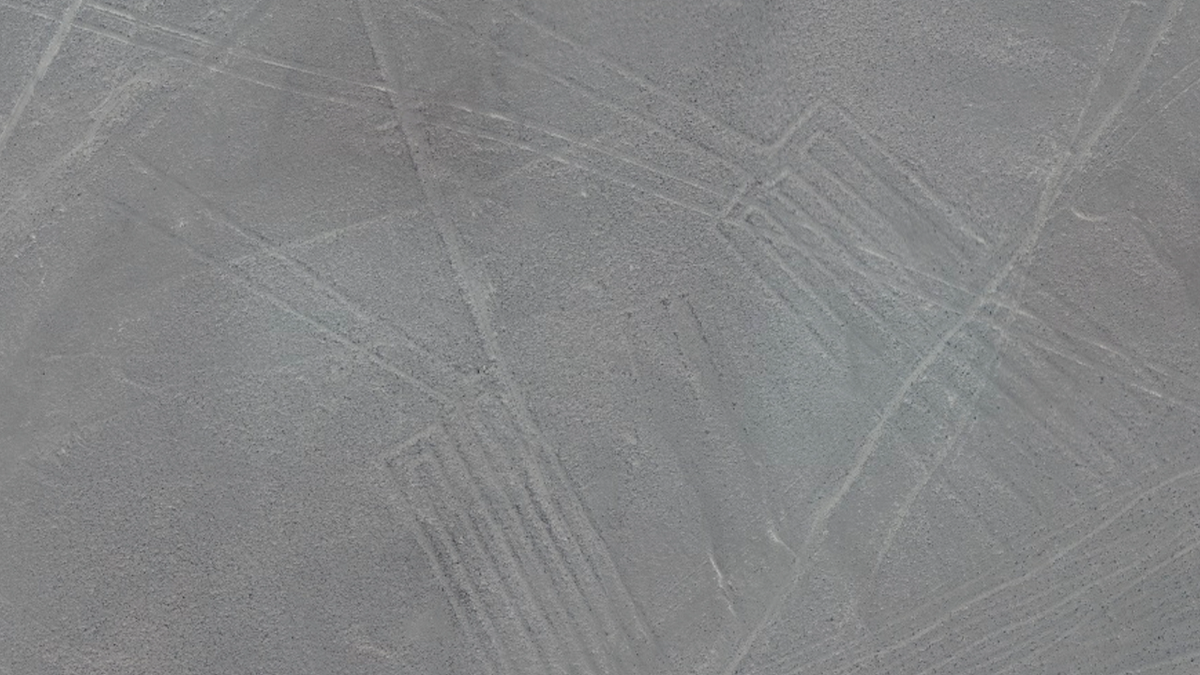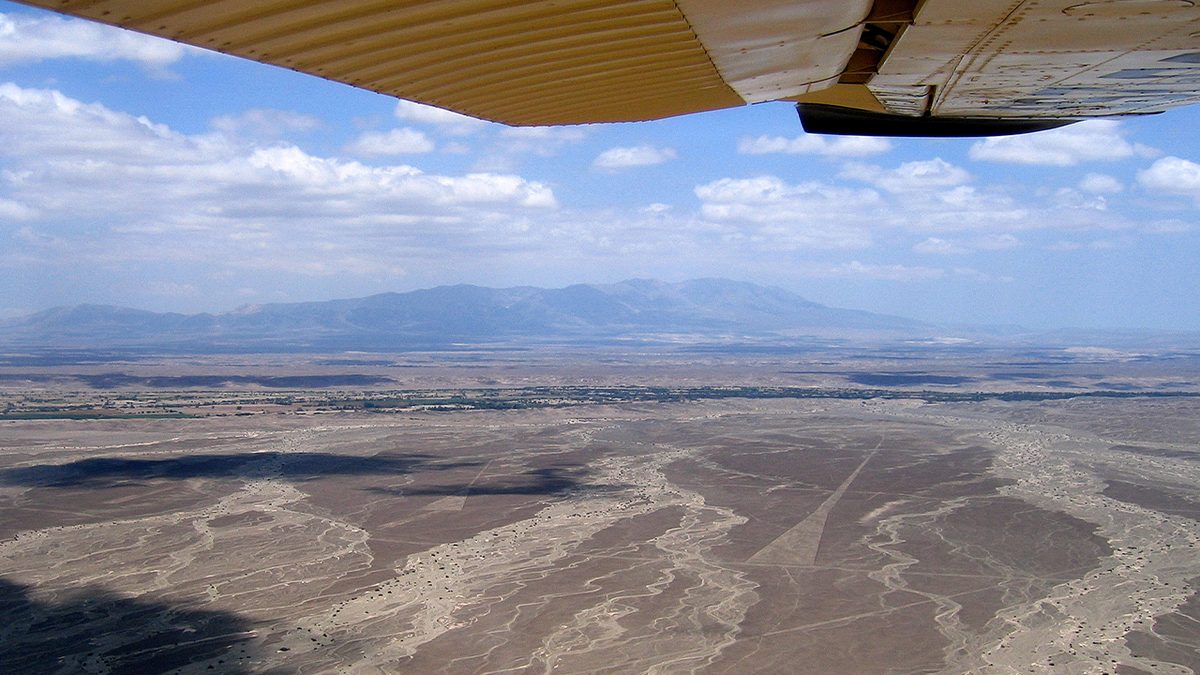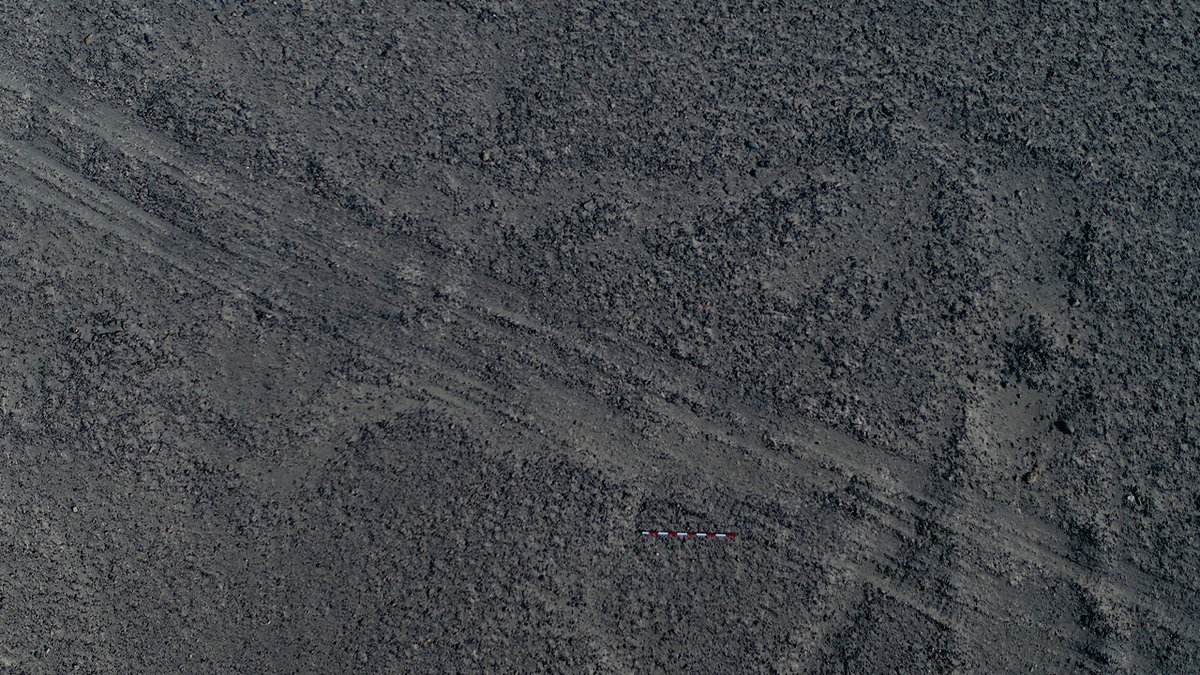Egyptian archaeologists discover ancient tunnel some believe could lead to Cleopatra's long-lost tomb
The massive tunnel was previously hidden beneath a temple 40-feet below the ground just west of Alexandria, Egypt. (Credit: Egyptian Ministry of Tourism and Antiquities via Storyful)
Artificial intelligence has catapulted the world into the future with platforms that can simulate how humans talk and even process information — but the tech can also help solve history’s great mysteries.
Researchers with Yamagata University Institute of Nasca and IBM Japan used a deep learning AI model to uncover Peruvian geoglyphs etched into the Nazca desert that date back to between 500 BC and 500 AD.
Geoglyphs are depressions made to the earth to create various shapes and lines, with Peru having what are considered the world’s most famous geoglyphs known as the Nazca Lines.
Geoglyphs are often massive, with previously discovered Nazca Lines reaching up to 1,200 feet long, which makes them virtually impossible to detect when on the ground. Archeologists first uncovered the Peruvian geoglyphs nearly 100 years ago after the advent of planes, when pilots spotted the shapes from the air.
Using the AI system, researchers were able to uncover four new geoglyphs that depict a "humanoid" figure holding what appears to be a club, one that depicts a fish, another showing a bird and one that appears to show a pair of legs.
MYSTERIOUS NAZCA LINES REVEAL THEIR SECRETS

Researchers discovered four Nazca Lines in Peru, including a "humanoid" figure appearing to hold a club. (SWNS )
There is debate among academics as to why people made the geoglyphs, with some speculating they wanted to honor deities who they believed could see the shapes from above, while some argue extraterrestrials played a role and the lines are remnants of an airfield for alien spacecraft.
MYSTERIOUS 'HUMANOID' FIGURES DISCOVERED IN PERU
Up until recently, archeologists and researchers would examine aerial photos of the area with just their naked eyes to try to find new geoglyphs, which "requires a substantial amount of time, posing a challenge in efficiency and scalability," according to the Yamagata researchers.
The scientists turned to artificial intelligence in their quest, training a deep learning system to identify potential Nazca Lines based on previous geoglyphs found in the area.

Researchers using AI discovered four additional Nazca Lines in Peru. (SWNS)
"Due to the requirement of detecting unconfirmed geoglyph candidates, careful consideration and ingenuity were needed in order to train a deep learning object detection model using training data of very limited quality and quantity," researchers said.
ANCIENT NAZCA LINES DAMAGED AFTER TRUCK PLOWS INTO ARCHAEOLOGICAL SITE
Utilizing AI paid off for the Yamagata team, as the tech was able to work 21 times faster compared to when just humans analyzed such photos.

The ancient and mysterious Nazca Lines in the Nazca Desert, on March 9, 2005 in Nazca, Peru. The lines and geoglyphs of the UNESCO World Heritage Site at Nazca, shaped as stylised animals and trapezoids, were discovered when people traveled over the area by airplane in the 1930s and are thought to be for ritualistic purposes although some theories relate to extra-terrestrial activity. (Jim Dyson/Getty Images)
"We could identify new geoglyph’s candidates approximately 21 times faster than with the naked eye alone," the researchers said in the study, which was published in the Journal of Archaeological Science. "The approach would be beneficial for the future of archaeology in a new paradigm of combining field survey and AI."
MYSTERIOUS 'NAZCA LINES' IN RUSSIA ARE THOUSANDS OF YEARS OLD

Nazca Lines in Peru that were discovered by artificial intelligence. (SWNS )
Following the success of integrating AI into archeological research, the Yamagata researchers will now team up with the IBM T. J. Watson Research Center, based out of New York, to expand their research to the entire region where the lines were discovered.
"In addition, we plan to work with the Ministry of Culture of Peru to implement activities aimed at protecting the geoglyphs discovered using AI," the researchers said.
Archeologists have previously used artificial intelligence to uncover other mysteries of the world, with the computers taking what is often the most difficult job for scientists and explorers: physically searching land for artifacts, lost cities and burial grounds.

Researchers discovered four additional Nazca Lines in Peru with the help of artificial intelligence. (SWNS )
AI systems trained to detect patterns on land using satellite and sonar images have already proven fruitful for other archaeologists, with AI detecting a Mesopotmian burial site in 2021 based on satellite images and another AI system detecting shipwrecks with 92% accuracy.
700K-YEAR-OLD ARCHAEOLOGICAL SITE FOUND IN GREEK COAL MINE BELIEVED TO BE COUNTRY'S OLDEST
AI technology has also helped scientists translate ancient texts, with researchers at the University of Chicago’s Oriental Institute and Department of Computer Science recently training a system on thousands of images and ancient characters that can translate ancient inscriptions with an 80% accuracy.
For the scientists at Yamagata University, they highlighted that archaeologists will likely see a boom in use of AI in the future.
CLICK HERE TO GET THE FOX NEWS APP
"Recent advances in automated sensing enabled by the proliferation of drones, robotics and Light Detection and Ranging (LiDAR), Big Data, and artificial intelligence may fuel the next wave of archeological discovery," they said.






















